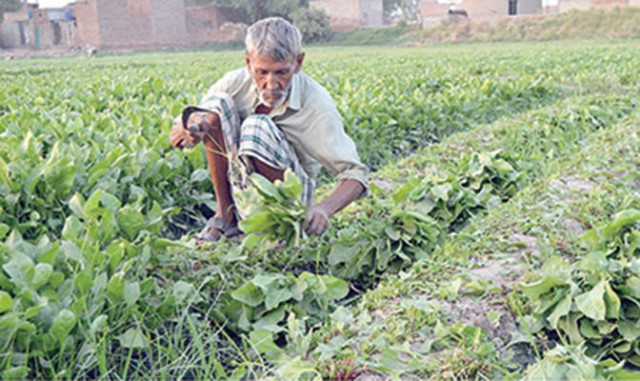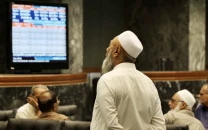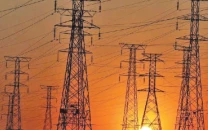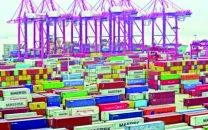Taking benefit of new China model
Smart planning will open fresh business avenues, pay rich dividends

The term “dual circulation” has been a source of attraction ever since it was deliberated upon in the Chinese politburo meeting on May 14.
It is now a widely debated subject among experts and governments. It has some proponents who highlight the sheer size of Chinese market and opportunities for investment and business. On the other hand, it has critics as well, who see it as reversing the phenomenon of opening up.
An analysis shows that the speculation about the nature and possible impact is due to less availability of government policy literature or clear position of the government of China. It is expected that policy and strategy documents about the model will be available in March 2021, which will help to demystify the model and clear China’s position.
However, economic experts from China and other parts of the world are trying to decode the term and the possible policy and strategy. They are also putting forward suggestions for consideration of the government.
They have arrived at a consensus that the dual circulation model seems to be the need of the hour due to two major factors – US and Western allies’ opposition to the economic rise of China at the global level, and Covid-19 impact on the global supply chain and trade.
It is not a secret that the US is forcing global players and allies to create economic obstacles in the way of China. Prominent examples are the recent trade war and restrictions on Chinese technology companies.
US President Donald Trump has used both tools and is asking the allies to follow suit. Thus, the European Union, India, Japan and others are joining hands with the US in support of the campaign.
Covid-19 is another factor which has pushed China to look for a new model of growth and development. The pandemic has put the world economy under stress and an economic recession is on the cards. Global supply chains and trade have been impacted badly and China cannot rely on them for future growth and development.
In this context, the model seems to be a good choice. As the name suggests, the model has two components - internal circulation and external circulation. However, the focus will be on internal circulation by enhancing the role of domestic market to lead economic growth in coming years and decades.
Economic experts suggest that in order to achieve the objectives, China will have to increase domestic consumption enormously. For that purpose, it will have to increase the income level and spending capacity of people.
On the supply side, China will have to look for ways to enhance the efficiency of industry and allocation of resources. The allocation of resources will include talent, land and financial resources.
Experts believe that the adoption of the model will create three types of opportunities for the world – increase in demand for commodities and other products in China, rise in demand for raw material and more avenues of investment.
Although the model will be open for everyone, the countries being part of the Belt and Road Initiative (BRI) will be in a better position to take benefit of the opportunities.
Pakistan’s case
Pakistan being the host to the China-Pakistan Economic Corridor (CPEC) project – the flagship project of BRI – will be in a unique position to capitalise on the opportunities as we know that the second phase of CPEC is all about industrial and agricultural cooperation.
If Pakistan plans smartly to implement the second phase in the context of dual circulation model, it will open new avenues of business and provide immense benefits.
First, the government will have to fine-tune the implementation plan for CPEC’s second phase and try to create linkages with the dual circulation model.
Industrial cooperation will be an excellent choice to start with. For that purpose, the government will have to work on two specific areas – joint ventures and inclusion in supply chain. Joint ventures will help Pakistan build capacity of its industry and provide easy access to Chinese markets.
We know that Pakistan’s industry is lagging behind in terms of technology and product diversification. Innovation is another area where Pakistan needs substantial investment.
Pakistani industrialists do not have such financial resources and the government is not in a position to help. Through joint ventures, Pakistan can overcome these shortcomings.
Joint ventures will pave the way for entry into the Chinese market as they will be in a better position to understand and work in this market. It will lead to a quantum jump in exports from Pakistan, which will be a good source of foreign exchange earnings.
Second, Pakistan should work with China for inclusion in the supply chain of Chinese industries.
Many Chinese companies are well-established brands like Huawei, Haier, etc. These companies are global players and are competing with global brands. Hence, Pakistan should ask China for becoming part of the supply chain, which will open multifaceted avenues for Islamabad.
Expanding footprint
Joint ventures and inclusion in the supply chain will create opportunities for Pakistan in other BRI countries as well. Being member of the BRI, Pakistan will be able to get preferred entry into partner countries.
For instance, Pakistan can ask Huawei to establish hardware production facilities and a software centre in the country. The venture will help Pakistan to create jobs, train human resources, provide business opportunities for small and medium enterprises (SMEs) and earn foreign exchange by exporting goods to BRI and other countries.
It will also build the capacity of SMEs to excel in certain fields of technology production. It will be a win-win situation as Chinese companies will get the benefit of cheap labour and a big consumer market in Pakistan.
Third, Pakistan should concentrate on cooperation in agriculture and food sectors with a renewed focus by keeping in mind the impact of dual circulation on food consumption in China.
It is a well-accepted fact that a rise in income and living standards always leads to enhanced consumption of food commodities and products. Hence, it is expected that there will be an increase in import of food items and China will be in search of trustworthy partners to ensure food security in coming years.
By building cooperation in the agriculture and food sectors, Pakistan will be able to overcome its problems in these critical areas.
We know that Pakistan is facing severe challenges in the agriculture sector, eg lower productivity, unavailability of quality input, post-harvest losses, supply chain and climate change threats. Similarly, it is lagging behind in food industry and fails to meet global standards for many food items.
Through cooperation we can overcome these challenges. It will help Pakistan to tackle issues of food insecurity and poverty, especially among the farming community.
China can benefit by importing food on favourable terms. It will help Beijing to meet its rising demand for food and will provide a chance to Pakistan to earn foreign exchange.
In the end, it is suggested that Pakistan should work dedicatedly to find other avenues of cooperation under the dual circulation model. It is good to note that the CPEC Authority is working very diligently for new means of engagement and how CPEC can help Pakistan to deepen its relations with China under the dual circulation model.
The authority chairman, a few days ago at the launch of a book “Understanding China for Future Cooperation”, highlighted the work of CPEC Authority on the dual circulation model. He pointed out that the authority would very soon be able to draw up a concrete plan to benefit from it. Let’s hope for the best.
The writer is a political economist
Published in The Express Tribune, December 21st, 2020.
Like Business on Facebook, follow @TribuneBiz on Twitter to stay informed and join in the conversation.


















COMMENTS
Comments are moderated and generally will be posted if they are on-topic and not abusive.
For more information, please see our Comments FAQ